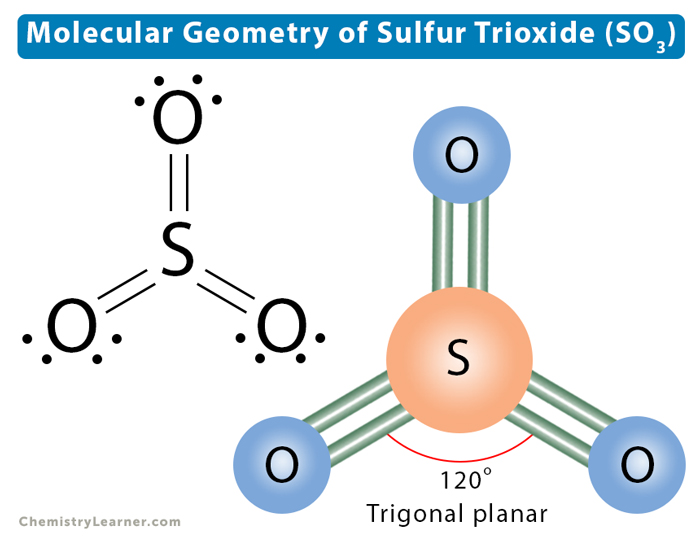Molecular Geometry of Sulfur Trioxide (SO3)
Sulfur trioxide (SO3) is made up of one sulfur (S) atom and three oxygen (O) atoms. Sulfur and oxygen are located in Group 16 of the periodic table. Both have six valence electrons. Oxygen requires two electrons to complete its octet and acquire the electron configuration of its nearest inert gas neighbor, neon [1-4].
Sulfur is the lower electronegative atom among the two and will occupy the central position. The oxygen atom will surround the central sulfur atom. The total number of valence electrons is 6 x 4 = 24. After distributing these 24 electrons, we find that the bond between sulfur and oxygen is double. Therefore, SO3 will have three double covalent bonds. Each oxygen atom will have two lone pairs, and sulfur will have none. Each S-O double bond has a sigma and a pi bond. The three sigma bonds will result in a steric number of 3. So, the hybridization in SO3 is sp2.
VSEPR theory is an accurate method of predicting molecular geometry. According to this theory, the bond pairs of electrons will be positioned as far apart as possible. As a result, SO3 will form a trigonal planar shape. The angle between any two S-O bonds is 120°. The central sulfur atom has no lone pairs; hence, the molecular shape is not distorted. The molecular geometry is the same as the electron geometry. The VSEPR notation is AX3.
